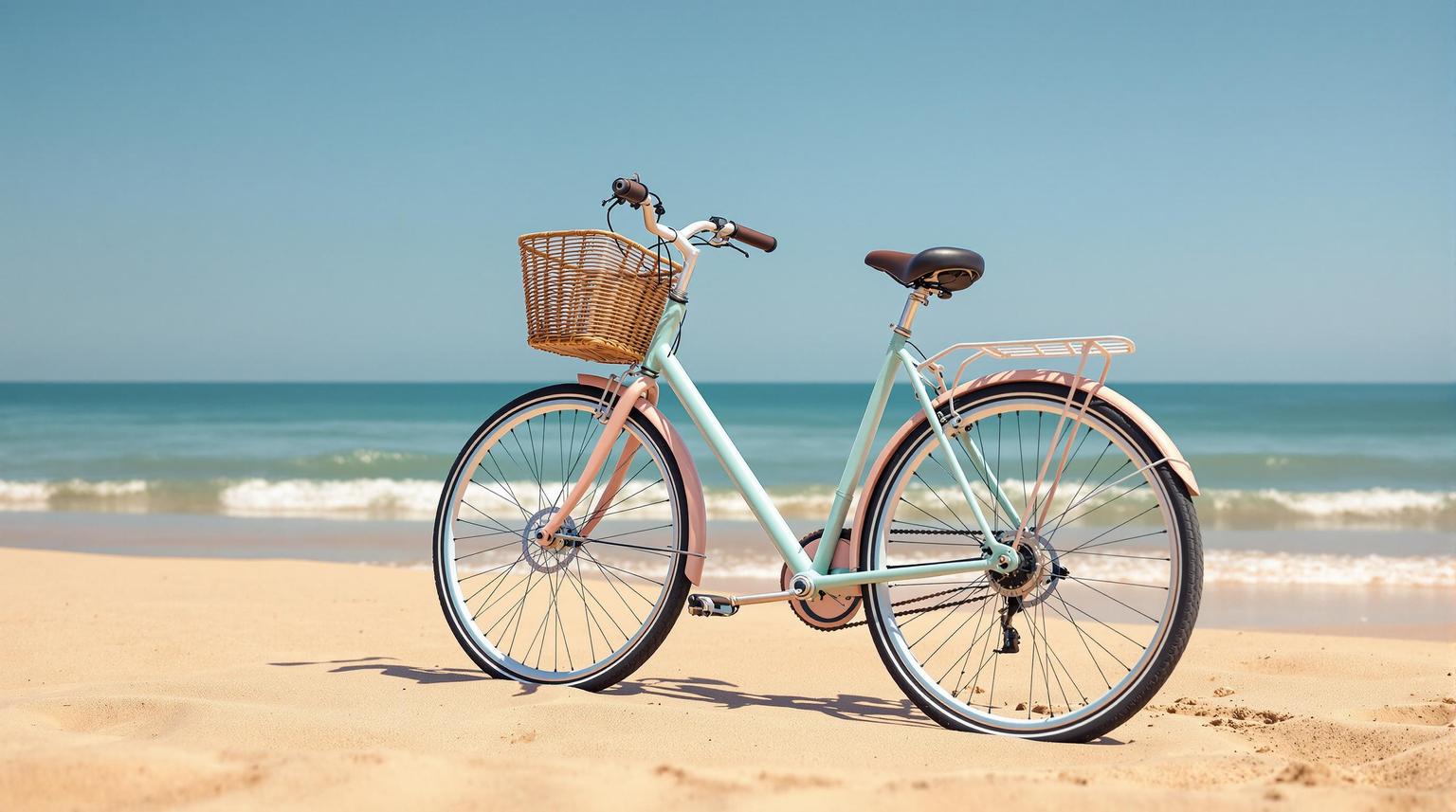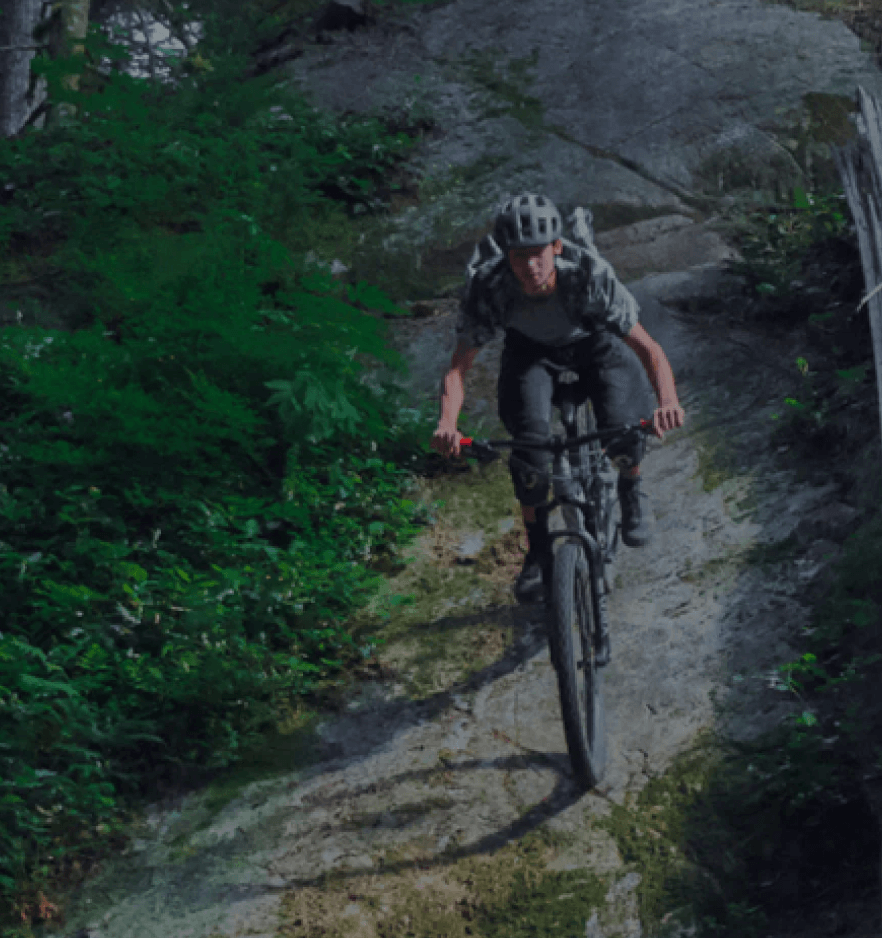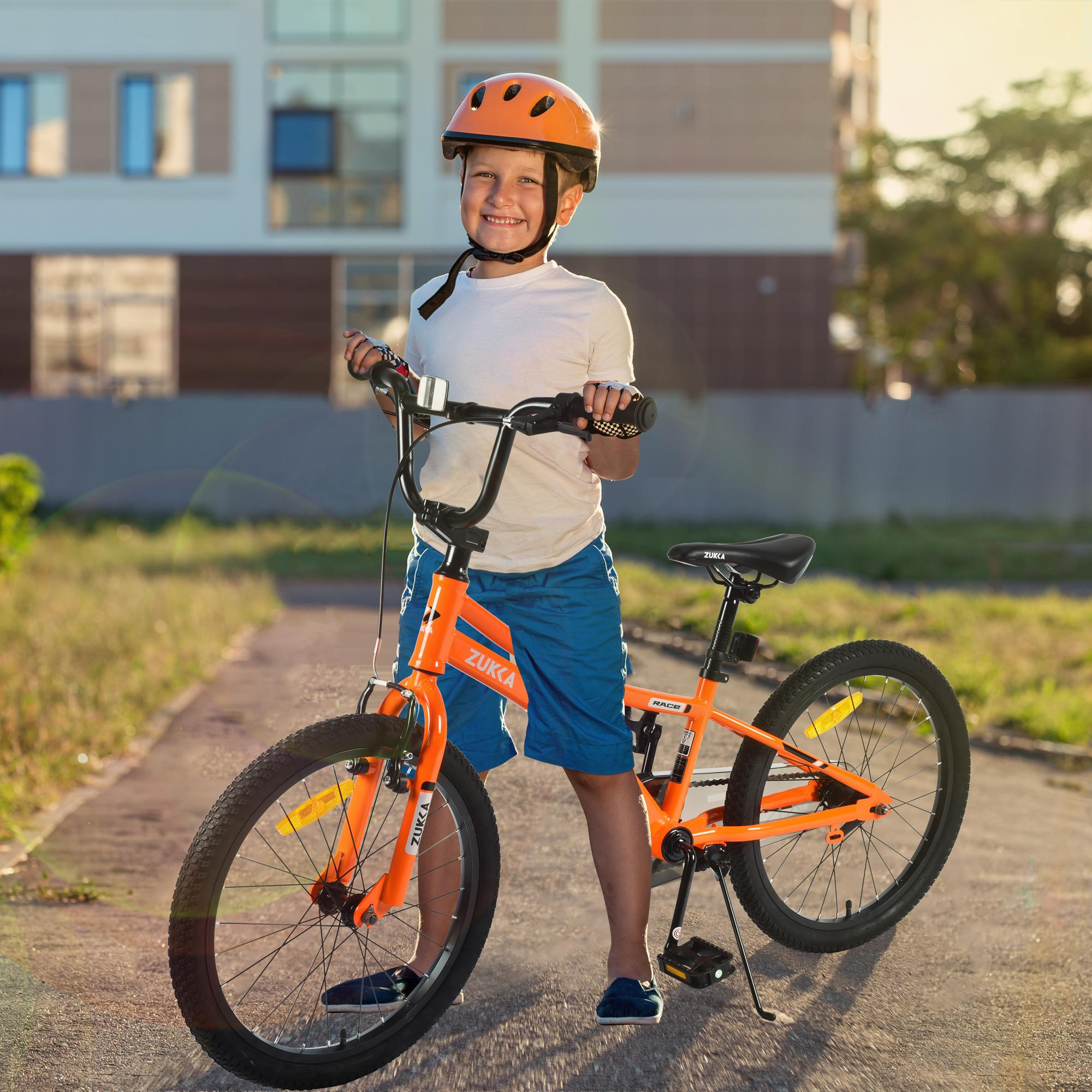Looking for the perfect beach bike? Here’s what you need to know upfront:
- Styles: Choose a beach cruiser for comfort and simplicity or a fat-tire bike for better traction on soft sand.
- Frames: Go with aluminum for lightweight and rust resistance, or steel for a smoother ride but more maintenance.
- Wheels: Standard 26-inch wheels work for packed sand and boardwalks, while fat tires (3.8–5 inches) are best for loose sand.
- Gears: Single-speed bikes are easy to maintain, but multi-speed options (3, 7, or 21-speed) handle hills and varied terrain better.
- Rust-Resistant Parts: Look for stainless steel components and treated chains to combat salty air and moisture.
Quick Tip: Regular cleaning, proper lubrication, and covered storage will keep your bike in top shape for coastal conditions.
This guide breaks down everything - styles, materials, wheels, and maintenance - so you can confidently pick a bike that fits your needs and lasts longer.
2021 Beach Cruiser Bicycle Buying Guide | Beach Cruiser Questions
Beach Bike Styles Explained
When you're cycling along the coast, two bike styles tend to dominate the scene: classic beach cruisers and fat-tire bikes. Each caters to different riding preferences and types of coastal terrain.
Classic Beach Cruisers
Beach cruisers are designed with one goal in mind: comfort. With their upright riding position, wide handlebars that curve back toward the rider, and cushioned seats, they're perfect for leisurely rides on boardwalks or paved paths along the shoreline.
"A cruiser bicycle is generally an upright bike that is a bit more stretched out than a typical Dutch design just to the point of leaning back slightly. It's a position that prioritizes rider comfort over everything else." - Ron Johnson, Author
One of the standout features of cruisers is their simplicity. Most models are single-speed, which means no gears to worry about - just hop on and pedal. This simplicity also makes them easy to maintain. They often come equipped with coaster brakes, so stopping is as easy as pedaling backward. If you're in the market for a quality cruiser, you can expect to spend between $200 and $400.
Now, for those looking to tackle more challenging beach terrains, there’s the fat-tire bike.
Fat-Tire Bikes
Fat-tire bikes are built for adventure. Their defining feature is their extra-wide tires - usually 3.8 inches or more - which provide a larger surface area for better traction. This design helps distribute weight more evenly, making it easier to ride on loose sand without sinking. Plus, lower tire pressures enhance grip and act as a natural shock absorber.
Unlike cruisers, fat-tire bikes typically come with multiple gears (7-speed or more), making it easier to pedal through soft sand or tackle inclines. Some models even include full suspension systems to handle uneven terrain, though this can mean a bit more upkeep. While these bikes excel on varied coastal landscapes, their sturdy frames and oversized tires make them heavier, which can be a challenge if you're short on storage space or need to transport them frequently. For the best sand-riding experience, look for models with tires around 4 inches wide and versatile gearing.
Frame Material Options
When picking a beach bike, the frame material is a key consideration due to the tough coastal environment - think salt air, sand, and moisture. The two most common options are aluminum and steel, each with its own strengths depending on how you ride and maintain your bike. Let’s break down the differences to help you make the best choice for your beach adventures.
Aluminum Frames
Aluminum frames are lightweight, which makes them easier to store and carry. They also naturally develop an oxide layer that helps resist rust, a handy feature near the beach. On the flip side, aluminum is stiffer than steel, which can make for a bumpier ride on uneven paths. It also tends to wear out faster over time. Plus, saltwater can speed up corrosion, so cleaning your bike after every ride is a must.
Steel Frames
Steel frames are all about comfort. Their natural flexibility absorbs vibrations, giving you a smoother ride. They’re also easier to repair if something goes wrong. As Thomas Nixa, Owner/Founder at NICAR Construction, puts it:
"Steel is flexible and feels alive. Steel is strong and tough and steel frames can be repaired and modified easier than any of the other types of frames listed."
That said, steel frames demand more upkeep. Salt air and moisture can cause rust, so regular cleaning and applying rust inhibitors are crucial. Neglecting this can lead to corrosion, which might lower your bike’s efficiency by 10–12%.
In short, go for aluminum if you want something lightweight and rust-resistant. Opt for steel if comfort and repairability are higher on your priority list. It all comes down to what matters most for your coastal rides.
Wheel Sizes and Tire Types for Sand
Picking the right wheels and tires can make all the difference when it comes to navigating sandy terrain. Whether you're cruising along the shoreline or tackling deep, loose sand, your setup can mean the difference between a smooth ride and getting stuck. Here's what you need to know about wheel configurations for beach biking.
Standard 26-Inch Wheels
For most beach riders, 26-inch wheels hit the sweet spot. They provide a balance of stability and ease of use, making them a popular choice. Beach cruiser tires are often sized at 26x2.125 inches - wide enough to offer comfort without being cumbersome. This setup works well on packed sand near the waterline and transitions smoothly to boardwalks or beach paths.
If you're after extra cushioning, cruiser tires in a 24x3.0-inch size are another option. These wider tires add comfort and stability but can increase rolling resistance on harder surfaces.
Fat Tires for Sand
For loose, deep sand, fat tires are a game-changer. These tires range from 3.7 to 5 inches in width, far wider than standard tires, which usually measure between 1.9 and 2.5 inches. According to Mark Minstrel from Himiway:
"The large tires provide improved traction and stability on soft sand, making it perfect for beach cruising."
Fat tires spread the bike's weight more evenly, keeping it from sinking into the sand. Unlike standard tires that dig into soft terrain and require more effort to pedal, fat tires "float" on the surface, making the ride much easier.
Tire pressure plays a critical role here. JRA from Electric Bike Forums emphasizes:
"A wide tire such as the 4.8 on your bike at a very low psi will perform the best on loose sand. However, if you have to ride any amount of hard ground on the way to the beach, you will suffer from high rolling resistance and possible self-steering issues."
To get the most out of fat tires, bring an electric pump with a tire gauge. Lower the pressure for soft sand to maximize grip, and pump it up for better performance on paved surfaces. While fat tires excel in sandy conditions, they can feel sluggish on harder ground due to increased rolling resistance. Think about your typical riding environment to decide if fat tires are the right fit for you.
sbb-itb-4ec432b
Important Beach Bike Features
Building on the essentials of styles, frames, and wheels, these additional features can fine-tune your beach biking experience. They’re designed to boost durability and performance in the unique conditions of coastal areas.
Gearing Options
Your choice of gears depends on where and how you plan to ride. If you're sticking to flat, scenic coastlines, single-speed bikes are a great option. They’re simple, low-maintenance, and perfect for cruising. But if your route includes hills or you want more versatility, multi-speed bikes are the way to go.
- 3-speed bikes: Offer a balanced range for sandy launches and mild inclines.
- 7-speed bikes: Ideal for casual rides on flat terrain.
- 21-speed bikes: Handle steeper coastal paths with ease.
However, keep in mind that many fat-tire bikes are single-speed, which could limit their use beyond the beach. Once you've chosen your gears, it's time to consider how to protect your bike from the harsh coastal environment.
Rust-Resistant Components
The salty air and sea mist are tough on metal parts, accelerating corrosion. To combat this, opt for bikes with stainless steel components and treated chains. As Tern Bicycles explains:
"When metal meets salt and moisture, it can lead to corrosion or rust... This combination speeds up oxidation, making the metal lose its strength more quickly."
Rust can appear in just a few days with constant exposure to moisture. Choosing rust-resistant parts upfront can save you time and money in maintenance. Look for bikes with stainless steel spokes, bolts, and fenders.
In a nine-month test by Popular Mechanics, the Priority Coast bike - featuring aluminum frames, stainless steel fenders and spokes, and carbon drive belts - showed minimal salt damage. Meanwhile, a standard Huffy bike developed significant rust under the same conditions. Treated chains and cables are also a smart investment for salty environments.
Useful Beach Bike Accessories
The right accessories can make your beach rides more enjoyable while protecting your bike. Here are a few essentials:
- Fenders: These keep sand, water, and debris off your bike, especially when riding through wet sand or after rain.
- Storage solutions: Front baskets are great for smaller items, while rear carriers can handle heavier loads. Wooden crates are a stylish and practical choice for carrying larger beach gear.
- Safety gear: Bells are essential for alerting pedestrians on crowded boardwalks, and lights improve visibility during overcast weather or sunset rides. For example, the Uptown USB Rechargeable Bike Lights are both convenient and reliable.
- Comfort upgrades: Additions like water bottle cages, cushioned grips, and comfortable saddles can make longer rides much more enjoyable, especially on sandy terrain.
For surfers, specialized racks are a must. Side-mounted racks work well for shorter boards (5–7 feet), while rear-mounted racks are better for longer boards. If you're looking for a budget-friendly yet durable option, the Gnarly Padz Inflatable Surf Rack Pads ($29.99) offer reliable protection and are more sustainable than traditional bungee cords.
These accessories not only protect your bike but also enhance your overall riding experience, making every beach trip a breeze.
Beach Bike Maintenance Tips
Beach environments aren't the easiest on bikes. The salt air, sand, and humidity can wear down components much faster than usual riding conditions. To keep your bike in top shape and avoid costly repairs, regular cleaning and proper maintenance are essential.
Cleaning and Lubrication
Riding near the beach means dealing with salt and sand - two things your bike absolutely doesn't love. Saltwater can corrode metal parts, and sand grinds into moving components, causing them to wear out quickly. That's why cleaning your bike after every ride is so important.
Start by rinsing your bike with fresh water. Use a low-pressure hose or a bucket to gently wash away loose sand and salt. Avoid high-pressure water, as it can push moisture into sensitive areas like bearings or electrical connectors. Pay extra attention to the chain, gears, and brakes where debris tends to collect.
Next, clean the bike with mild soap and a soft brush or sponge. Focus on the frame, wheels, and all moving parts to remove any lingering sand particles. Once you're done, dry the bike thoroughly with a towel or compressed air, and then let it air dry completely to prevent moisture from causing rust.
The chain deserves special care. Use a degreaser to clean it thoroughly before applying lubricant. In sandy conditions, a dry lube works best because it attracts less dirt compared to wet lube. Apply the lubricant directly to the chain rollers while pedaling backward, then wipe off any excess to prevent grime buildup.
"A well-maintained chain makes for a happy bike (and rider)." - Bikes Palm Beach
For bikes with electronic components, take extra precautions. Cover connectors and ports during cleaning, and consider using a protective coating or corrosion-resistant spray on the frame and metal parts for added protection.
A quick clean after every ride is ideal, but plan for more thorough maintenance every few rides. Once your bike is clean and lubricated, proper storage will further protect it from the harsh coastal elements.
Storage Solutions
Where you store your bike plays a big role in keeping it in good condition. Indoor storage is your best bet, as it shields your bike from constant exposure to salt air and humidity. If you have a garage or shed, that's perfect. For those without indoor storage, invest in a high-quality bike cover made from waterproof and UV-resistant material. Just make sure both the bike and cover are completely dry before covering - trapped moisture can speed up rust.
Good ventilation is another key factor. If you're storing your bike in a small indoor space, using a dehumidifier can help, especially in areas where humidity stays high year-round.
For long-term storage, take extra steps to protect your bike. Apply a waxy corrosion inhibitor to metal parts and seal any paint chips or scratches, especially on steel frames. Keep the drivetrain well-lubricated to prevent it from drying out.
"Salty air is way overrated, clean, lube, cover." - miamijim, Senior Member, Bike Forums
When it comes to storage, think of it as a hierarchy: indoor storage is the best option, followed by well-protected outdoor storage. Leaving your bike outdoors without protection should be the last resort. Regular inspections are also a good habit - check for rust spots, cable corrosion, and brake pad wear to catch issues early. By staying on top of cleaning and storage, you'll keep your beach bike running smoothly for the long haul.
Conclusion: Finding Your Perfect Beach Bike
When picking a beach bike, focus on what matches your riding needs. For smooth boardwalks, a classic cruiser with a single speed and coaster brakes works beautifully. If you're tackling sandy paths or hilly areas, a fat-tire bike with multiple gears and hand brakes is a better fit.
Think about the frame material, too. Aluminum is lightweight and resists rust - ideal for salty coastal air. Steel offers better shock absorption but may require more upkeep to prevent corrosion.
Wheel size also matters. Standard 26-inch wheels handle most rides well, but if you're often riding on loose sand, consider fat tires between 3.8 and 5 inches wide for better stability and traction.
Comfort should never be overlooked. A professional bike fitting can make a world of difference, ensuring your bike feels right for your body and riding style.
Lastly, invest in rust-resistant parts and commit to regular maintenance. Clean your bike, lubricate moving parts, and store it properly to keep it performing well over time. With the right setup and care, you're set for countless enjoyable rides along the coast.
FAQs
What’s the difference between a beach cruiser and a fat-tire bike, and how do I choose the right one for beach riding?
The key differences between a beach cruiser and a fat-tire bike lie in their tires, overall design, and the type of terrain they're built for. Beach cruisers come with narrower tires, usually around 2.1 inches wide, making them ideal for smooth surfaces like boardwalks or hard-packed sand. They’re designed for comfort, offering a relaxed, upright riding position that’s perfect for casual, laid-back rides.
In contrast, fat-tire bikes are equipped with much wider tires - ranging from 3.8 to 5 inches - which give them superior stability and traction on soft sand, uneven trails, or other challenging terrains. These bikes are built for adventure and can handle conditions that would be difficult for a cruiser.
Choosing between the two depends on where you plan to ride. For paved paths or firm sand, a cruiser offers comfort and style. But if you're venturing onto softer sand or rugged terrain, a fat-tire bike is the better option for navigating those tougher conditions.
How do I keep my beach bike in great condition and protect it from rust near the coast?
To keep your beach bike running smoothly and safe from rust in a salty coastal environment, regular maintenance is a must. After every ride, rinse your bike with fresh water to wash away salt and sand that can lead to corrosion. Once clean, dry it thoroughly to prevent any lingering moisture.
Use a protective spray specifically made to guard metal parts against rust and corrosion. Don’t forget to lubricate the chain and other moving parts with a high-quality bike lubricant to keep everything running smoothly and rust-free. When you’re not riding, store your bike indoors if possible, or use a durable protective cover to shield it from the harsh elements. These easy steps will keep your bike in great condition and ready for your next seaside adventure!
What’s the difference between aluminum and steel frames for a beach bike, and how do they compare in durability and maintenance?
When choosing between aluminum and steel frames for a beach bike, it’s essential to consider how they hold up over time and what kind of care they require.
Steel frames are known for their strength and ability to absorb shocks, making them a solid choice for bumpier rides. Plus, if they get damaged, they can usually be repaired. The downside? Steel is heavier and vulnerable to rust if the paint gets scratched, so you’ll need to stay on top of maintenance to keep corrosion at bay.
Aluminum frames, on the other hand, are lightweight and naturally resistant to rust - ideal for the humid, salty air near the beach. While they don’t match steel’s durability and can crack under significant stress, their low-maintenance nature and moisture resistance make them a favorite for sandy, coastal environments.
In the end, your choice boils down to your riding habits and how much effort you’re willing to put into upkeep.


